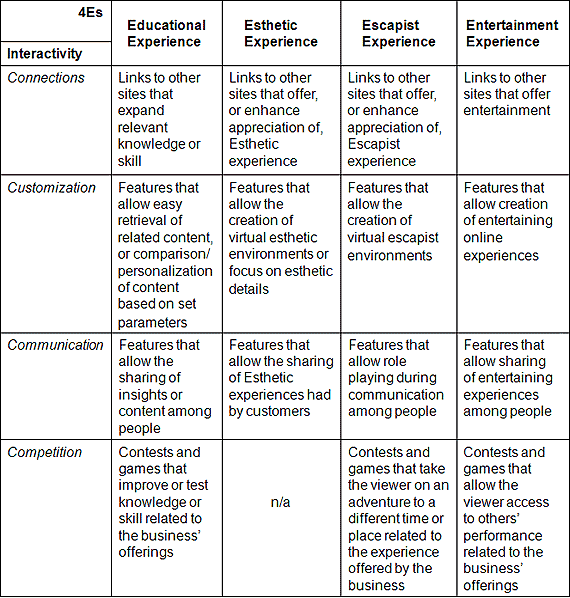


Page 11/15 |
Lesson 5 Resources Development of Experiential Web sites |
The last of the 3Is is Interactivity, which entails safe and easy online transactions, as well as the 4Cs: Connections to other sites, Customization (i.e., access, comparison, and personalization) of content, Communication, and Competitions. Media such as newspapers, TV, magazines, and catalogs, have Information and Interface elements in common with Web sites.
For instance, information, music, and photographs are available through TV ads as well as Web sites. Interactivity sets Web sites apart from other media. The customer cannot customize the combination of goods seen on a catalog page, but can customize what product combination he/she would like to see on a page of a Web site.
Therefore, a Web site offers opportunities for the business to connect with and cater to customers, which are not available through other forms of media. Some features of interactivity may be more useful for particular business types, therefore not all 4Cs would be appropriate for all businesses. Table 5.3 provides information about the 4C features and Web site examples of business types most commonly employing the features.
Table 5.3 The 4Cs of Interactivity and the 4Es

Page 11/15 |
Web site and all contents © Copyright SRDC 2009, All rights reserved. |
|
| These materials were developed as part of the Southern Rural Development Center’s National e-Commerce Extension Initiative. They are based upon work supported by the Cooperative State Research, Education, and Extension Service, U.S. Department of Agriculture, under Award No. 2005-45064-03212 Any opinions, findings, conclusions, or recommendations expressed in this publication are those of the author(s) and do not necessarily reflect the view of the U.S. Department of Agriculture or the Southern Rural Development Center. |
|